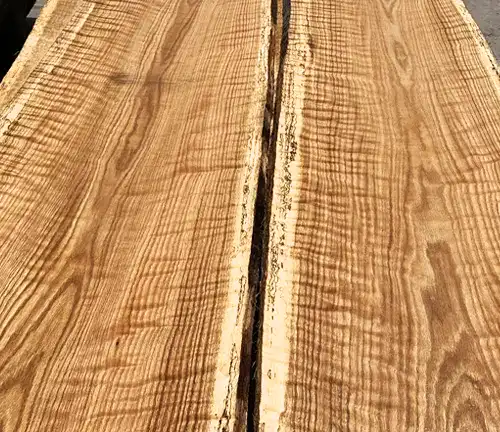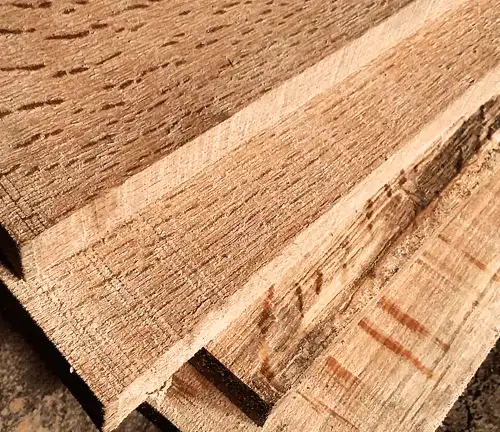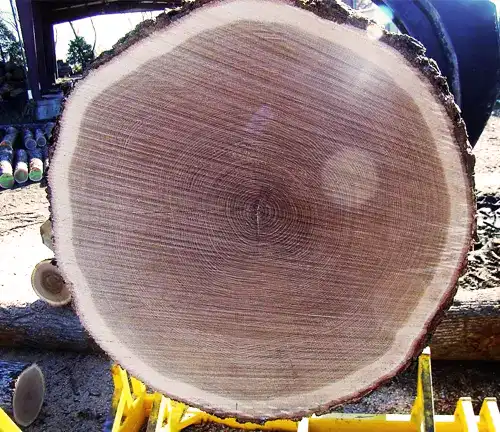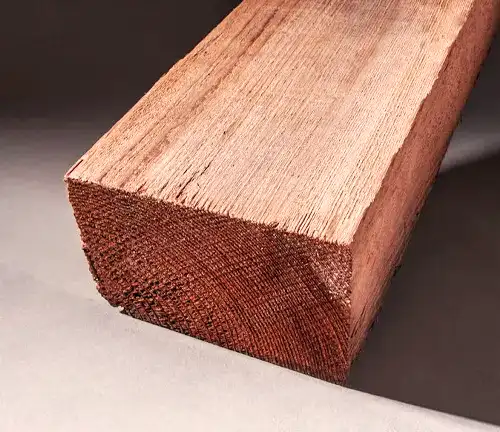Red Oak Lumber
- October 5, 2023
- 0 comment
Derived from the Quercus rubra tree, Red Oak lumber stands as a versatile and cherished hardwood in various industries, particularly in the realm of woodworking. Originating from North America, this hardwood species is distinguished by its adaptability and unique aesthetic features. The heartwood of Red Oak exhibits a captivating reddish tint, ranging from light tan to shades of pinkish or reddish-brown, adding warmth and character to the wood. Complemented by a straight and open-grain pattern, Red Oak presents a visually appealing canvas for craftsmen and designers.

Beyond its visual allure, Red Oak is prized for its medium to coarse texture, enhancing its workability. Craftsmen find Red Oak lumber highly amenable to a range of machining processes, gluing, and finishing, making it a preferred choice for those seeking both aesthetic appeal and ease of crafting. With a Janka hardness rating of approximately 1,290 lbs, Red Oak strikes a balance between durability and workability, ensuring resilience in various applications while allowing for relative ease in processing.
What sets Red Oak apart is its affordability and widespread availability. This accessibility makes it a practical and popular choice for woodworkers across skill levels. Red Oak’s adaptability shines through in the construction of furniture, cabinets, flooring, and interior trim, demonstrating its versatility in a variety of applications. Its timeless appeal and rich color palette seamlessly fit into both traditional and modern design settings, making Red Oak lumber a sought-after material. As a testament to the enduring charm of natural wood, Red Oak continues to be a reliable and trusted companion for those who value both aesthetics and functionality in their woodworking endeavors.

| Specification | Description |
| Species | Red Oak (Quercus rubra) |
| Density | 40-45 lbs/ft³ (641-721 kg/m³) |
| Hardness | Janka: 1,290 lbf, (5,738 N) |
| Compressive strength | 1,200-1,500 psi (8.3-10.3 MPa) |
| Shear strength | 800-1,100 psi (5.5-7.6 MPa) |
| Moisture Content | 6-8% (kiln-dried) |
| Modulus of rupture | 12,000-15,000 psi (82.7-103.4 MPa) |
| Modulus of elasticity | 1,600,000-1,800,000 psi (11.0-12.4 GPa) |
| Surface Finish | Rough-sawn, S2S, S4S, |
| Texture | Coarse, with an open grain |
Brief History
Red Oak lumber, hailing from the stately Quercus rubra tree, carries with it a storied history deeply rooted in the American landscape. Native to North America, this hardwood has played a pivotal role in the nation’s architectural and woodworking heritage. From the construction of colonial-era homes to the crafting of enduring furniture, Red Oak has left an indelible mark on the history of woodworking.
Properties of White Oak Lumber
The hallmark of Red Oak lies in its versatility, combining a distinctive aesthetic with remarkable strength. With a Janka hardness rating ranging from 1,290 to 1,360 lbs, Red Oak stands as a testament to its enduring properties, making it a preferred choice for a multitude of applications.
Color/Appearance
The name “Red Oak” can be somewhat misleading, as the wood’s color spectrum spans from light tan to pinkish or reddish-brown. The heartwood often displays a reddish tint, contributing to its warm and inviting appearance. This variability in color adds to the wood’s visual appeal.

Grain/Texture

Red Oak showcases a straight and open grain pattern, giving rise to a visually striking ray flake pattern. This distinctive grain, coupled with a medium to coarse texture, enhances the wood’s aesthetic charm, making it a favorite among craftsmen and designers.
Durability
Renowned for its durability, Red Oak lumber can withstand the test of time. Its robust nature ensures resilience in a variety of applications, from the construction of sturdy furniture to the crafting of interior trim.

Rot Resistance

While Red Oak is not as naturally resistant to decay as some hardwoods like White Oak, it can still maintain its integrity with proper treatment and finishes. This makes it suitable for a range of indoor applications.
Sustainability
Red Oak contributes to sustainable forestry practices when harvested responsibly. With attention to replanting and conservation efforts, this valuable resource can be managed in a way that ensures its availability for future generations.
Harvesting and Processing
Harvesting Red Oak involves careful planning and adherence to sustainable practices to ensure the health of forests. Post-harvest, the lumber undergoes precise processing, including kiln-drying, to achieve optimal moisture content for stability and longevity.

Common Uses
Red Oak finds its way into a myriad of applications, showcasing its versatility. From crafting fine furniture and durable cabinets to laying the foundation for elegant flooring, Red Oak’s adaptability is evident in various woodworking projects.


Conclusion
In the world of lumber, Red Oak stands as a testament to the marriage of strength and aesthetic appeal. Its rich history, versatile properties, and enduring popularity underscore its significance in woodworking. From the crafting of historical masterpieces to the construction of contemporary designs, Red Oak remains a timeless companion, weaving itself into the very fabric of American craftsmanship.
Frequently Asked Questions (FAQs)
- Is there a difference between Red Oak and White Oak lumber, besides the color?
Yes, there are differences beyond color. White Oak has a tighter grain pattern and is slightly harder than Red Oak. It is also more resistant to decay and water, making it suitable for outdoor applications. Red Oak, on the other hand, has a more porous grain and is easier to work with, making it a favorite for indoor furniture and cabinetry. - Can Red Oak lumber be used for outdoor projects?
While Red Oak is not as naturally rot-resistant as White Oak, it can still be used for outdoor projects with proper treatment and maintenance. Applying a suitable outdoor finish or sealant can enhance its durability and protect it from the elements. - Why is Red Oak called “Red” Oak if it’s not always red in color?
Red Oak’s name can be somewhat misleading. While the heartwood often displays a reddish hue, it can vary from light tan to pinkish or reddish-brown. The name primarily refers to the reddish tint often present in the wood, especially in the heartwood. - Is Red Oak lumber suitable for staining or does it look best in its natural color?
Red Oak is a great candidate for staining, thanks to its open grain and porous texture, which absorb stains evenly. Many woodworkers and designers appreciate its versatility for achieving a range of finishes, from light to dark, while still allowing the grain pattern to shine through. - Does Red Oak lumber have any unique historical significance?
Red Oak lumber has played a pivotal role in American history, particularly during the colonial period. It was widely used for constructing homes, barns, and even early American furniture. Its abundance and versatility made it a vital resource for early settlers, leaving an indelible mark on the architectural and cultural landscape of the United States.







Leave your comment